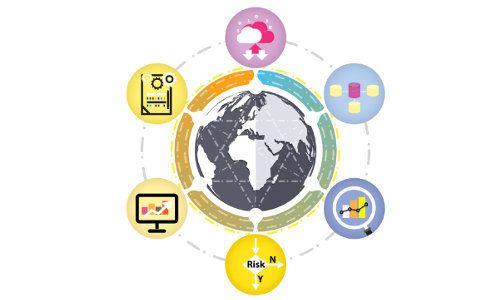Automated decision-making is transforming banking services as we know them. So what are the benefits of employing recommendation engines – and what examples are already in use?
By Sven Probst, Managing Partner, Financial Services; Antonio Russo, Lead Partner, Service Delivery Transformation and Fabien Lopez, Senior Manager, Deloitte Switzerland, Zurich
Only a few years ago, human beings were needed to understand text and recognise images. It is now becoming increasingly possible to automate these functions using cognitive technologies, such as machine learning. In fact, one of the first practical deployments of machine learning, the automated processing of handwritten cheques, began in banking in the early 1990s.
We have come a long way since then. The past few years have seen significant disruption in the area of automated decision-making, mostly led by young, innovative tech companies. Business leaders are using cognitive technologies to create an enhanced customer experience and expand beyond their traditional industry borders. These technologies offer substantial improvements and are developing on a rapid scale.
Recommendation Engine
The next frontier of automated decision-making is the recommendation engine – an intelligent deployment of machine learning technology to augment or fully automate a decision making process. Making insightful recommendations, such as recommending products to customers that they are likely to want to buy, has long been the holy grail of any commercial company. We also see a fundamental change in the way that customers respond to insightful recommendations.
Banks that chose to harness the potential for using recommendation engines are creating a competitive advantage by providing a more personal experience to their customers, as well as augmenting capabilities of their employees.
Leveraged Insights
Recommendation engines work because they leverage insights gained from past customer behaviour to predict future customer wants – a few ubiquitous examples:
- Amazon is the biggest retailer in the world, and its recommendation engine generates a large percentage of its sales. This engine creates a compelling user experience by suggesting products that are considered to have the most relevance to their customers.
- Netflix has become a number one content provider due to its superior recommendation engine that leverages past selection data, as well as user ratings and feedback. With this data, it provides relevant, personalised movie suggestions to its customers.
Transforming the Way Banks Operate
So what does this mean for the banking world? The main uses and benefits of recommendation engines for banks include:
1. Personalisation at Scale
Insight-driven banks extract knowledge from the data they have collected about their clients to shape a tailored customer experience. Examples include the interface that customers see when entering the online banking platform, and the product suggestions that appear whilst the consumer is using a mobile app.
A typical banking customer has two objectives; to spend smarter and to invest smarter. Unfortunately, the driving forces behind each of these objectives are often different for each customer, which is why customisation enabled by recommendation systems can be so effective.
Recommendation systems are able to analyse transaction data and make customised suggestions to clients about how to save money. They can also analyse the behaviour of other customers with similar characteristics, and recommend products that have worked for them.
2. Workforce Augmentation
Recommendation engines enable employees to make better decisions and invest their time in a smarter way. Better decisions increase the productivity and value-add of employees, and this in turn improves the performance of a business as a whole.
Fraudulent activities are very costly for banks. Traditionally, fraud detection used a rule-based pattern-matching approach, which was both time-consuming to maintain, and often ineffective due to ever-evolving fraud techniques. Using machine learning, banks are able to detect anomalies with much greater accuracy and flag suspicious activity sooner. This leads to an increase in fraud detection as well as a reduction in false alarms.
3. Automation Orchestration
Reaping the full benefit of automated decision-making requires linking different parts of an organisation and creating end-to-end journeys. Once automated decision-making is applied in one part of the business, it can create opportunities that go well beyond automating an isolated process or transaction.
Banks process a large number of transactions every day. Imagine a bank that categorises each customer transaction in real-time by type of purchase, such as expenditure on entertainment, travel, food, or rent. This is possible with recommendation engines that allocate each purchase to the appropriate expenditure category based on patterns discovered in similar historical transactions.
In fact, some banks already use real-time classification of customer spend. A bank can use this information to provide a spend analysis to customers. Spend analysis, in turn, can be used as input to a recommendation engine that advises customers on how to save money, or what products to invest in.
Cognitive Technologies
Automated decision-making is already rapidly transforming how banks deliver services across the entire value chain. Their deployment is enabling personalisation at scale and workforce augmentation, and this in turn is creating further automation opportunities.
To reap the full benefits of recommendation engines, banks need to take an even more holistic view of their customer journey as they already do. Read more about cognitive technologies on the Deloitte website.











